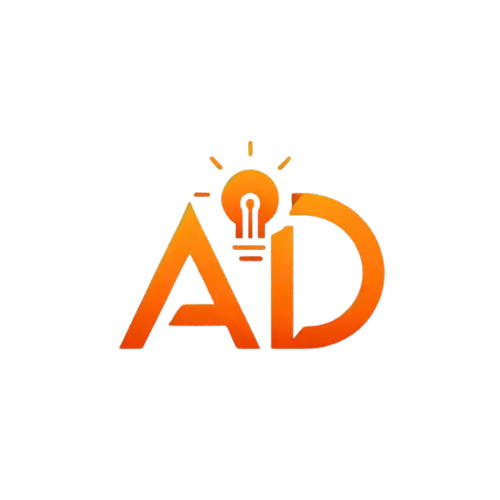GAMIFIED
SCENARIO eLEARNING
Journey into Communication
Snapshot
This course was created to help working professionals develop essential communication tools to navigate workplace challenges effectively. It emphasizes practical skills in verbal clarity, active listening, and leadership communication through engaging, scenario-based learning missions. Additionally, this course serves as an exposition and experiment on AI tools, integrating AI-driven video animation, image creation, and scenario generation to enhance the learning experience.
Audience
The primary audience was the client’s global pharmaceutical sales team, spanning diverse cultural and linguistic backgrounds. The learners needed an easily accessible, self-paced course that provided practical tools to enhance their sales approach.
My Role
Instructional Design, Authoring, Storyboarding, Visual Design, Video Editor.
Tools Used
Instructional Design: SAM Model and action mapping.
Storyboarding,Prototyping and Action Mapping: Microsoft PowerPoint, Figma, Google Docs.
Media Development: HeyGen (video animation & editing), Canva (visual assets), Bing Image Creator (asset creation).
Feedback and Testing: Google Forms, LinkedIn, and Microsoft Excel for organizing participant insights.
THE CHALLENGE
In today’s fast-paced work environments, communication is both a critical skill and a common challenge. Many professionals find themselves struggling to clearly convey complex ideas, listen actively, or inspire their teams under pressure. Misunderstandings can easily arise, leading to misaligned goals and disrupted collaboration. I noticed that while many professionals want to improve these skills, traditional corporate training often feels like an obligation rather than an opportunity for personal growth. This inspired me to create a course that not only addresses these communication gaps but does so in a way that feels engaging and rewarding, even after a busy workday.
THE SOLUTION
In response to the challenge of disengagement in traditional corporate training, I designed Journey Into Communication as a gamified, scenario-based eLearning course. The course blends entertainment and learning, using immersive interstellar environments and thoughtfully designed characters to engage professionals in high-stakes communication scenarios.
Key Elements

Immersive Scenarios
Step into realistic challenges to sharpen your communication skills.

Practical Relevance
Tackle workplace scenarios you’ll recognize and need to master.

Dynamic Feedback
Receive immediate, actionable insights tailored to your choices.

Visual Design Experience
Enjoy a visually stunning experience that’s as functional as it is beautiful.

Gamified Progress
Earn badges and track achievements as you conquer missions.

Accessibility First
Designed for all learners, with inclusivity at its core.

Sci-Fi Storytelling
Explore unique planets with compelling narratives designed to engage.

Adaptive Learning
Progress at your own pace with flexible, self-directed missions
Why It Works

Real-Life Application
The interactive characters and missions were designed to simulate realistic workplace situations, enabling learners to practice and apply their communication skills in a safe, virtual environment.

Engagement & Retention
By incorporating engaging characters and intuitive UI design, I enhanced the interactive experience, making it more enjoyable and accessible for diverse users. This level of engagement significantly improves retention and knowledge application.

Inclusivity & Accessibility
The course’s inclusive UI design and diverse character representation ensure that all learners feel connected to the content, which leads to a more engaging and empowering learning experience.
THE PROCESS
Learning Theory
Situated Cognitive Theory played a big role in shaping this course. From my experience as an experiential learning facilitator, I’ve seen firsthand in my facilitation work, how participants internalize concepts better by first engaging in a hands-on, immersive activity, followed by reflective discussion. In this course, learners are placed in dynamic, realistic scenarios where communication is key. They encounter communication challenges in various contexts and reflect on their performance through feedback, just as they would in a real-world professional setting. This approach helps learners feel the need for improvement before they dive into the theory behind their behaviors, mirroring the way adults learn best: by doing and reflecting.
Design Methodology
I chose to use the Successive Approximation Model (SAM) for this course design because it offers flexibility, agility, and continuous collaboration, which was important given the variety of simulations and feedback loops I wanted to include. Starting with quick prototypes, I could rapidly test out ideas for missions, feedback, and UI/UX design with a small group of trusted peers and collueagues. By using SAM’s iterative design approach, I ensured that each aspect of the course was developed and improved upon continuously, incorporating feedback early and often to create the most engaging learner experience possible.
Action Mapping
Action mapping was essential in identifying the core workplace communication issues learners face. My consulting experience provided insight into real-world scenarios, such as presenting clearly to clients, the struggle of active listening in team meetings, or making quick, critical decisions during high-pressure situations. Each mission in the course—whether it’s delivering a strategic initiative on Planet Veritas, mediating conflict on Planet Harmonia, or leading a mission underwater—directly mirrors these challenges. Action mapping allowed me to focus the course on skills that would genuinely improve workplace performance, making it feel relevant and practical for participants.

Storyboarding
For storyboarding, I started with text-based outlines, breaking down each mission into detailed dialogue, actions, and learner decision points. The storylines had to be compelling and immersive, with each mission posing critical communication challenges. I used real conversations I’d encountered as a consultant, tweaking them to fit the futuristic, space-themed setting. I wanted learners to get drawn into the narrative, making their choices instinctively, and then seeing the impact of those choices unfold through feedback. This added a sense of adventure while keeping the learning objectives front and center.
Visual Design
Theme and Concept
While designing this course, I kept returning to the vastness of space. To me, it felt like the perfect analogy for communication, it’s expansive, intricate, and full of opportunities for exploration. Communication isn’t just about saying the right words; it’s about timing, empathy, and really understanding the dynamics of a situation. I wanted the learners to feel like they were embarking on a journey, discovering the depth and richness of this skill set in a way that was exciting and approachable, not overwhelming.
The sci-fi theme was my way of bringing that vision to life. It’s immersive, a little playful, and, most importantly, captures the idea that there’s always more to learn.
Interactive Elements
One of the most important design features for me was ensuring that every interaction felt intentional and rewarding. The planets in the course are a central part of the experience, and I wanted learners to feel like they were really interacting with them, not just clicking through. To achieve this, I designed a hover state for each planet that causes it to grow in size as you hover over it. This subtle effect gives the learner the impression that the planet is coming closer to them, ready to be explored.
As the planet grows, the skill associated with it appears beneath the planet, making it clear which communication skill the learner is about to dive into. This interaction was designed to make learners feel like they’re about to embark on an adventure—each planet representing a new challenge, and all they need to do to start is click. It creates a sense of anticipation and engagement, encouraging them to explore the course and its various components.
Colors
The color palette was another key part of the experience. I chose pinks, purples, and blues to reflect the mysterious vastness of space, but also to make the course feel inviting and dynamic. These colors work together to keep learners intrigued while providing a sense of calm focus.
Skill Badges
Every mission comes with a reward: a badge. These weren’t just an afterthought; I designed them to symbolize the specific skill each learner mastered. My hope was that they’d serve as a little reminder of their achievement and encourage them to keep going.

Characters
The characters were one of my favorite parts to design. I wanted them to feel relatable enough for learners to connect with but still maintain that sci-fi vibe. Each character also plays a critical role in the learning experience by providing feedback. For example, if a learner makes a great choice, the character’s expression might light up. If the choice needs improvement, the character might look puzzled or concerned. It’s like having a coach in the room with you.
Mayer´s Multimedia Principles
This course was a great opportunity to showcase Mayer’s principles in action. For example:
- Coherence: I stripped away anything that didn’t serve the learner’s understanding, no unnecessary animations, no background music to distract from the experience, besides the beginning introduction.
- Signaling: Key points or knowledge are bolded or written in purple to draw attention.
- Segmenting: Each mission is its own bite-sized chunk, making it easy for learners to focus on one skill at a time.
- Personalization: I kept the language friendly and accessible, knowing that many learners might not speak English as their first language or might be doing this course after an intensive workday.
Challenges and Reflections
This course pushed me in ways I didn’t anticipate, but that’s part of what made it so rewarding to create. One of the biggest challenges was generating consistent characters. Using AI tools for visuals was fascinating but tricky, getting the same character to appear in multiple poses or expressions often resulted in subtle differences, making continuity a challenge. This taught me a lot about working with constraints and finding creative solutions in design.
Another challenge was weaving the storyline into realistic, relatable communication scenarios. I wanted the course to feel relevant to working professionals while staying true to the immersive, sci-fi narrative I envisioned. Balancing these two aspects, realism and creativity, took careful planning and iteration, especially when trying to ensure that each mission felt connected to the overarching theme.
The final challenge? Time. I developed this course (and the Value-Based Sales microlearning also in this portfolio) during the 30-day free trial of Articulate 360. Knowing I had such a tight window, I planned every detail beforehand, sketching out designs, watching countless YouTube tutorials, and learning everything I could about the software so I could hit the ground running. Despite my preparation, the time crunch left a few small errors I wasn’t able to fix before the trial ended. If I could go back, I’d refine my work schedule even further and allow more time for review.
Looking back, these challenges weren’t just obstacles, they were opportunities to grow. This project took me out of my comfort zone, helped me refine my skills, and reinforced how much I love designing engaging, meaningful learning experiences. I hope you’ve enjoyed exploring my work, and I’d love the chance to collaborate with you on future projects. Let’s create something extraordinary together!










